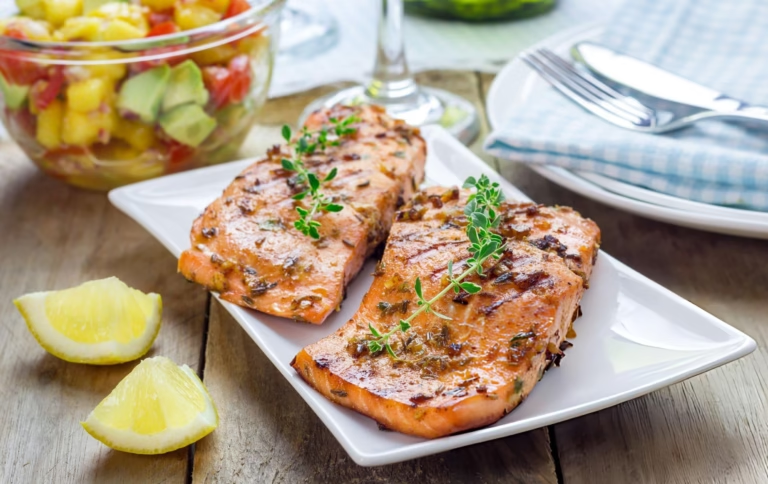If you love the rich, smoky flavors of Chipotle’s famous barbacoa, this homemade version will become your new favorite recipe. Tender, juicy beef slow-cooked in a bold chipotle adobo sauce makes the perfect filling for tacos, burritos, bowls, and more.
In this detailed guide, you’ll learn how to make authentic barbacoa chipotle just like the restaurants—but with even deeper flavor and customizable heat. Whether you use a slow cooker, Instant Pot, or stovetop, this recipe guarantees fall-apart tender beef every time.
What Is Barbacoa?
Barbacoa is a traditional Mexican dish where meat (usually beef, lamb, or goat) is slow-cooked until incredibly tender. The version popularized by Chipotle uses beef chuck roast or brisket, braised in a smoky chipotle pepper sauce with garlic, cumin, and other spices.
Unlike regular shredded beef, barbacoa has a distinct deep, spicy, and slightly tangy flavor from the adobo sauce and vinegar. It’s a staple in Mexican cuisine, often served at celebrations and family gatherings.
Key Ingredients for the Best Barbacoa Chipotle
To achieve the most authentic flavor, these ingredients are essential:
1. The Beef
Chuck roast – The best cut for barbacoa because it becomes incredibly tender when slow-cooked.
Beef brisket – A great alternative with rich marbling.
Beef cheek (cachete) – The most traditional choice, but harder to find.
2. The Chipotle Sauce
Chipotle peppers in adobo – These smoked jalapeños bring the signature heat and smokiness.
Adobo sauce – The thick, spiced sauce from the can enhances depth of flavor.
Beef broth – Adds richness; use low-sodium to control salt levels.
Apple cider vinegar – A touch of acidity balances the richness.
3. The Spices
Cumin – Earthy warmth that’s essential in Mexican cooking.
Oregano – Use Mexican oregano if possible for a more authentic taste.
Smoked paprika – Enhances the smoky flavor from the chipotles.
Bay leaves – Adds subtle herbal notes.
Step-by-Step Cooking Instructions
1. Prepare the Beef
Trim excess fat from a 3 lb chuck roast and cut into 4 large chunks.
Pat dry with paper towels to ensure a good sear.
2. Sear the Meat (Optional but Recommended)
Heat 2 tbsp oil in a Dutch oven or heavy pot over medium-high heat.
Sear the beef on all sides until deeply browned (about 3-4 minutes per side).
Remove and set aside.
3. Make the Chipotle Adobo Sauce
In a blender, combine:
3-4 chipotle peppers + 1 tbsp adobo sauce (adjust for spice preference)
4 minced garlic cloves
1 cup beef broth
1 tbsp apple cider vinegar
1 tbsp cumin, 1 tbsp oregano, 2 tsp smoked paprika, 1 tsp black pepper, 1 tsp salt
Blend until completely smooth.
4. Slow Cook the Barbacoa
In the same pot, sauté 1 chopped onion until soft (about 5 minutes).
Add the seared beef back in, then pour the blended sauce over it.
Drop in 2 bay leaves and stir well.
Cooking Methods:
Slow Cooker: Cook on low for 7-8 hours or high for 4-5 hours.
Stovetop: Simmer covered on low for 3-4 hours until fork-tender.
Instant Pot: Pressure cook on high for 60 minutes, then natural release.
5. Shred and Serve
Discard bay leaves, then shred the beef with two forks.
Mix the meat back into the sauce and let it soak for 10-15 minutes before serving.
Best Ways to Serve Barbacoa Chipotle
This versatile dish can be used in countless ways:
1. Tacos
Warm corn tortillas, top with barbacoa, diced onions, fresh cilantro, and a squeeze of lime.
2. Burrito Bowls
Layer cilantro-lime rice, black beans, barbacoa, roasted corn, pico de gallo, and guacamole.
3. Quesadillas
Stuff flour tortillas with cheese and barbacoa, then grill until crispy.
4. Nachos
Top tortilla chips with melted cheese, barbacoa, jalapeños, and sour cream.
5. Breakfast Hash
Sauté barbacoa with potatoes, onions, and eggs for a hearty breakfast.
Expert Tips for Perfect Barbacoa
For extra tenderness, cook the beef until it easily falls apart when pressed with a fork.
Adjust the spice level by using fewer chipotle peppers for mild heat or adding more for extra kick.
Make it ahead—barbacoa tastes even better the next day as the flavors meld.
Freeze leftovers in an airtight container for up to 3 months.
Perfect Barbacoa Chipotle Recipe
This barbacoa chipotle recipe delivers the same mouthwatering flavors as your favorite restaurant, with the added benefit of being homemade. Whether you’re meal prepping, hosting a taco night, or simply craving something delicious, this dish is a guaranteed winner.
Give it a try and taste the difference slow-cooked, smoky barbacoa makes! For more Mexican-inspired recipes, stay tuned and happy cooking.
Beef Barbacoa Chipotle Recipe (FAQs)
The barbacoa at Chipotle is a slow-cooked, shredded beef dish known for its rich, smoky, and slightly spicy flavor. Made primarily from beef shoulder (chuck roast), it’s braised with a blend of chipotle peppers, adobo sauce, garlic, cumin, and other spices until it becomes incredibly tender. Unlike traditional Mexican barbacoa, which can sometimes be made with lamb or goat, Chipotle’s version sticks to beef for a more accessible taste. The meat is simmered in its own juices along with the bold adobo seasoning, giving it a deep, complex flavor that’s both savory and slightly tangy. It’s one of the most popular protein options at Chipotle, especially for those who enjoy a little heat in their burritos, bowls, or tacos. The cooking process ensures the beef stays moist and full of flavor, making it a standout choice compared to simpler meats like chicken or steak.
Barbacoa is traditionally made with beef, though in some regions of Mexico, lamb or goat is used. At Chipotle and most American restaurants, barbacoa always refers to beef—specifically cuts like chuck roast or brisket that become tender when slow-cooked. Pork, on the other hand, is used in dishes like carnitas, which is another Mexican slow-cooked meat but with a different flavor profile (more citrusy and less spicy). So if you’re ordering barbacoa at Chipotle or making it at home, you’re getting beef, not pork. The confusion sometimes comes from the fact that both barbacoa and carnitas are shredded meats, but the seasonings and cooking methods differ. Barbacoa gets its deep, smoky taste from chipotle peppers and adobo sauce, while carnitas is simmered with herbs and citrus for a milder, more savory finish.
Barbacoa has a rich, smoky, and slightly spicy taste with a deep umami flavor from the slow-cooked beef. The chipotle peppers and adobo sauce give it a noticeable but not overwhelming heat, along with a touch of sweetness and tanginess from the vinegar and spices. Garlic, cumin, and oregano add earthy, aromatic notes that balance the smokiness. When cooked properly, the beef is so tender that it practically melts in your mouth, absorbing all the bold flavors of the braising liquid. Compared to other Mexican meats like carnitas (which is more citrusy) or carne asada (which is grilled and leaner), barbacoa stands out for its juicy, fall-apart texture and complex seasoning. It’s a hearty, satisfying meat that works well in tacos, burritos, or even on its own with rice and beans.
The main difference between barbacoa and carnitas at Chipotle is the type of meat and how it’s seasoned. Barbacoa is made from beef (usually chuck roast) and is slow-cooked with chipotle peppers, adobo sauce, and spices, giving it a smoky, slightly spicy flavor. Carnitas, on the other hand, is made from pork shoulder and is braised with herbs, garlic, and citrus (like orange or lime), resulting in a milder, more savory taste without the heat. Texture-wise, both are tender and shredded, but barbacoa has a deeper, richer taste due to the chipotle peppers, while carnitas is juicier with a subtle sweetness from the citrus. If you prefer bold, spicy flavors, go for barbacoa; if you want something more traditional and less spicy, carnitas is the better choice.
Barbacoa can be a healthy protein option depending on how it’s prepared. Since it’s made from beef, it’s high in protein, iron, and B vitamins, which are great for energy and muscle health. However, it can also be high in fat if made with fatty cuts like chuck roast, so leaner versions (using trimmed beef or brisket) are better if you’re watching calories. The spices and chipotle peppers add flavor without extra calories, but store-bought or restaurant versions (like Chipotle’s) may contain added salt. Homemade barbacoa lets you control the ingredients, making it a healthier choice—just pair it with fiber-rich sides like beans, veggies, or whole grains to balance the meal. Overall, in moderation, barbacoa is a nutritious and satisfying dish.
Chipotle can be a healthy fast-food option if you choose wisely. Their ingredients are fresher than most fast-food chains, with no artificial additives, and you can customize your meal to fit your dietary needs. Opting for a bowl with lean protein (like chicken or barbacoa), brown rice, black beans, fajita veggies, and fresh salsa keeps calories in check while providing fiber, protein, and vitamins. However, high-calorie add-ons like sour cream, cheese, and tortilla chips can quickly turn a healthy meal into a heavy one. Portion control is key—Chipotle servings are large, so splitting a meal or saving half for later helps. Compared to other fast-food chains, Chipotle offers more whole, unprocessed ingredients, making it one of the better choices for a balanced meal.
Chipotle’s prices are higher than some fast-food chains because they prioritize quality ingredients. They use responsibly sourced meats (like antibiotic-free chicken and grass-fed beef), organic produce when possible, and fresh, non-GMO ingredients, which cost more than the processed fillers used by cheaper chains. Their commitment to food integrity—such as avoiding artificial flavors and preservatives—also drives up costs. Additionally, Chipotle’s portions are larger than typical fast food, so you’re getting more food for the price. Labor costs, inflation, and supply chain factors also play a role. While it’s pricier than McDonald’s or Taco Bell, many customers find the better ingredients and customizable meals worth the extra cost.
Chipotle’s spiciness depends on what you order. Some menu items, like the barbacoa and the hot salsa (red tomatillo), have noticeable heat from chipotle peppers and jalapeños, while others, like carnitas or the mild salsa (pico de gallo), are very mild. If you’re sensitive to spice, you can avoid the spicier proteins (barbacoa, chorizo) and opt for chicken or steak instead, then skip the hot salsa in favor of corn or green chili salsa. The queso and sour cream help balance the heat if you accidentally go too spicy. Overall, Chipotle lets you control the spice level based on your preferences, making it easy to customize a meal that’s as mild or as fiery as you like.
The healthiest fast-food options are those that focus on fresh, whole ingredients with lean proteins and plenty of vegetables. Chipotle is a top contender because of its customizable bowls with antibiotic-free meats, beans, and fresh salsas. Other healthy choices include Sweetgreen (salads with organic veggies), Panera Bread (broth bowls and salads), and Subway (if you opt for whole-grain bread and load up on veggies). Even at traditional fast-food chains, you can make healthier picks—like grilled chicken wraps at Chick-fil-A or protein-style burgers (lettuce-wrapped) at In-N-Out. The key is avoiding fried foods, heavy sauces, and oversized portions while prioritizing fiber-rich veggies, lean proteins, and whole grains. Chipotle often ranks highest because of its transparency and commitment to real ingredients, but smart choices can make almost any fast-food meal healthier.


